
Gallery For > Lo Studiolo Vasari Palazzo vecchio, Secret passages
The Secret Passages and the Studiolo of Francesco I. Besides the Tower of Arnolfo, the Salone dei Cinquecento and the Sala delle Mappe, among the best known places inside the Palazzo Vecchio, it is also possible to visit more hidden and lesser-known parts, such as the Studiolo di Francesco I.. With the ticket for Palazzo Vecchio and its secret passages, in addition to access to the palace, you.
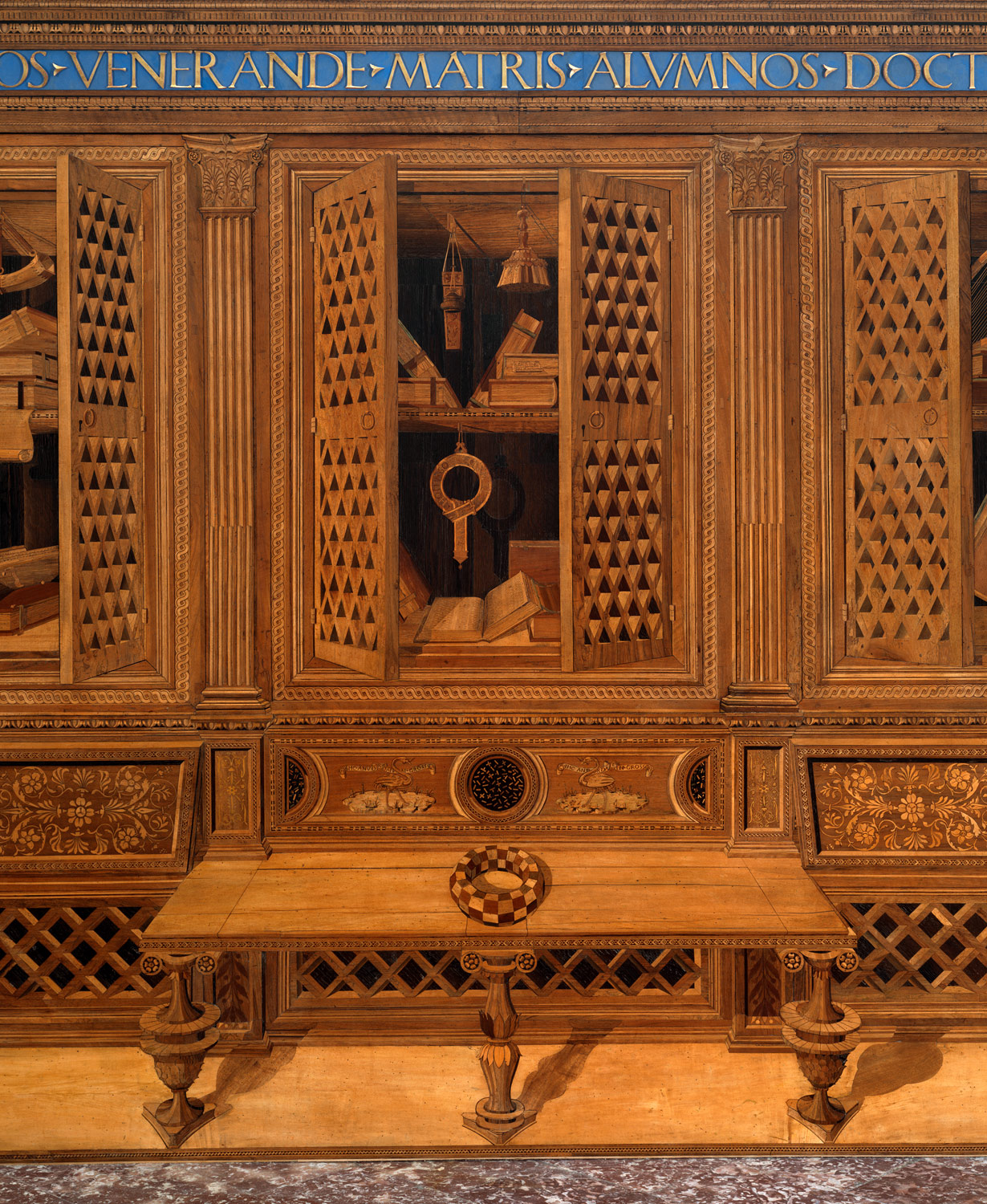
Studiolo from the Ducal Palace in Gubbio Francesco di Martini
Studiolo di Francesco I - sculptures (1 C, 35 F) Media in category "Studiolo di Francesco I" The following 191 files are in this category, out of 191 total. Alessandro allori, banchetto di cleopatra, 1570-73 ca. 01.jpg 2,056 × 2,956; 4.38 MB Alessandro allori, banchetto di cleopatra, 1570-73 ca. 02.jpg 2,748 × 2,304; 4.19 MB

Marqueterie de bois. Studiolo d'Urbino. Platser
The construction of the " Studiolo " from 1570 to 1575, to a design by court architect and painter Giorgio Vasari with the assistance of the scholar Vincenzo Borghini, was commissioned by Francesco de' Medici who had taken over from his father Cosimo I in 1564 as regent of the Duchy of Tuscany.

soffitto dello Studiolo di Francesco I de' Medici Palazz… Flickr
At the end of the wall of the Salone dei Cinquecento (the one where the entrance is), there is a small masterpiece of Florentine mannerism, the study of Francesco I (in Italian "Studiolo di Francesco I" also called Tesoretto or Scrittoio del Duca). It is a small side room without windows that was part of the private apartments of Francesco I.

Lo studiolo di Francesco I de' Medici un "guardaroba di cose rare et
The decoration of the Studiolo was the responsibility of Giorgio Vasari (1511-1574). However, for the design ( invenzione ), Vasari appealed to Vincenzo Borghini (1515-1580), Cosimo I's lieutenant of the newly founded Accademia delle Arti del Disegno, the first ever artist academy. Borghini conceived the plan for the Studiolo in autumn 1570.

Lo Studiolo di Francesco I de' Medici Pittura, Arte, Artisti
A small room in Palazzo Vecchio in Florence, Italy, the Studiolo Francesco I de' Medici was the secret refuge and private museum of the one-time Duke of Tuscany from 1574 to 1613.
I Viaggi di Raffaella Palazzo Vecchio a Firenze lo Studiolo di
The Casino di San Marco is located on the north side of Florence, not far from where the old city walls once stood. It was purpose-built as a laboratory by Don Antonio's father, Grand Duke Francesco and stands on the former location of the sculptural school that Michelangelo attended as a boy. The Casino is a remarkable structure in the.
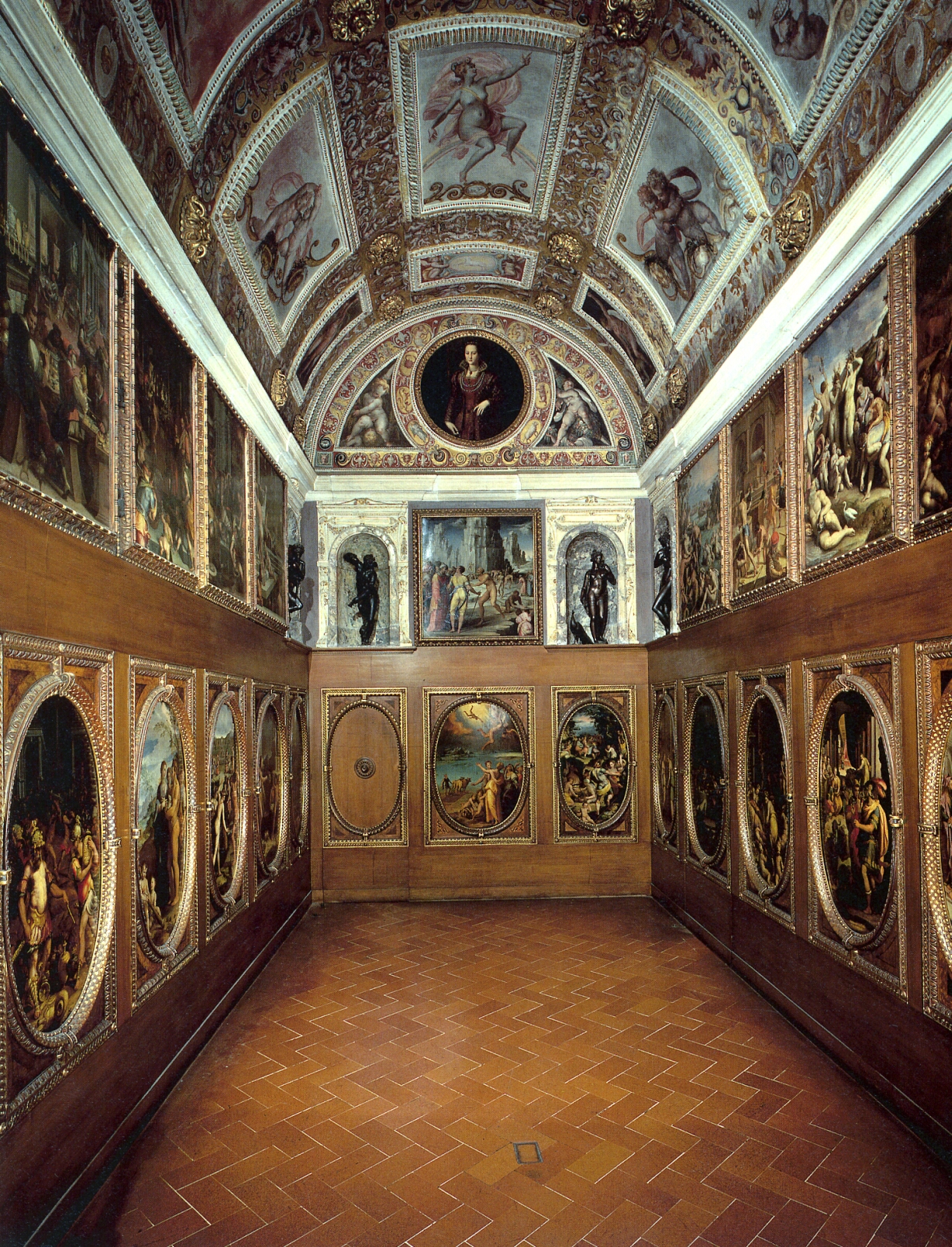
Flash sul mondo di tutto, di più Lo Studiolo di Francesco I de' Medici
El studiolo fue para Francesco un proyecto personal para el que buscó inspiración en los llamados Guardaroba. Su objetivo era crear un espacio de uso privado, que representaría una culminación de intelectualidad y fantasía. Por ello, la naturaleza domina la sala, que presenta una clara subdivisión entre naturalia y artificialia. - La decoración

Studiolo do Palácio Ducal de Gubbio (14391501 ) Francesco di
The Studiolo of Francesco I in the Palazzo Vecchio is a testament to the changing styles at the end of the Cinquecento, and has been called a perfect example of Mannerist art. This dissertation considers the original invenzione of the Studiolo as intended by Don Vincenzo Borghini and Giorgio Vasari, and provides compelling new evidence to.
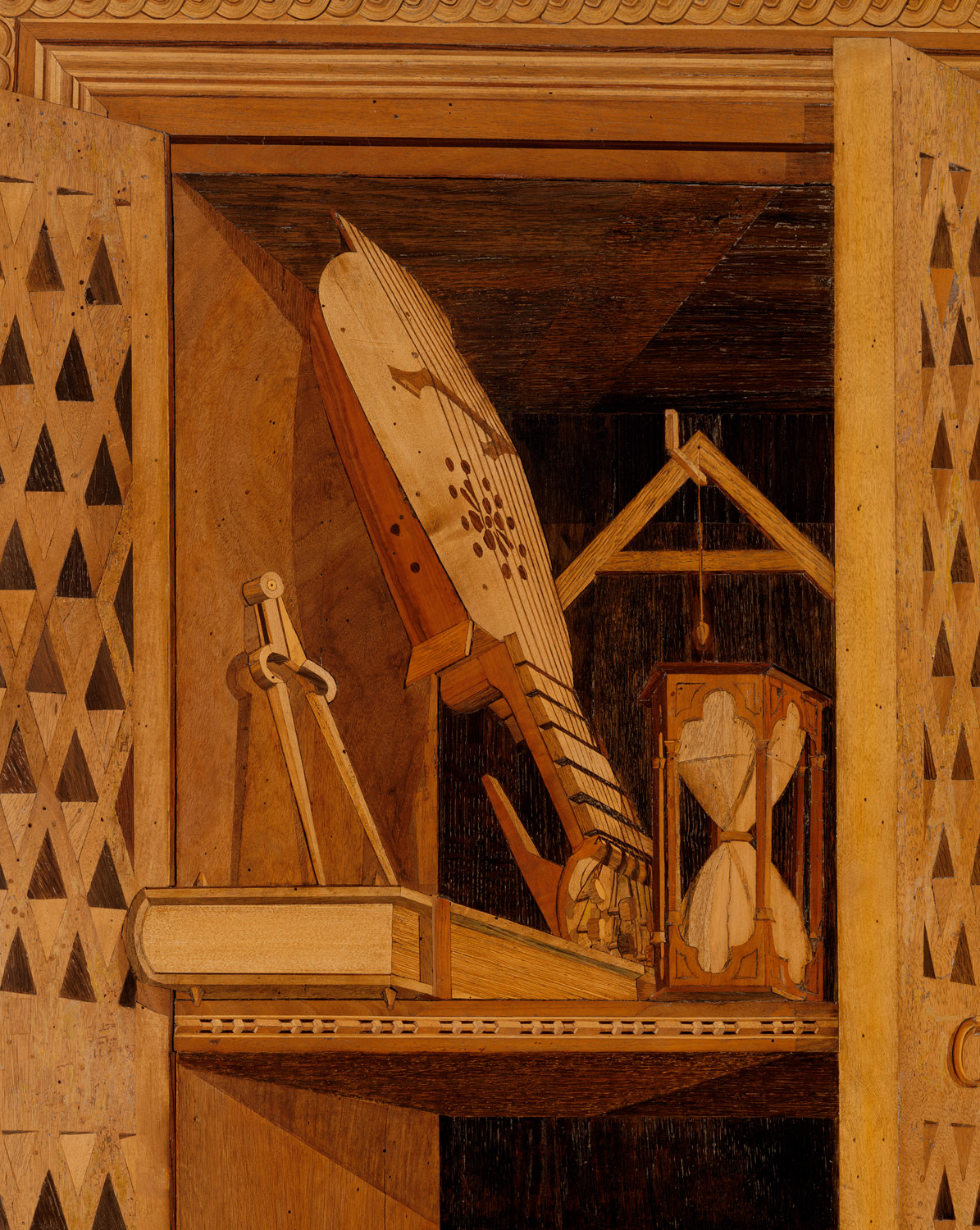
Studiolo from the Ducal Palace in Gubbio Francesco di Martini
A Room of One's Own: The Studiolo. Designed by Federigo da Montefeltro, executed in the workshop of Giuliano da Maiano. Studiolo from the Ducal Palace in Gubbio, c. 1478-82. Walnut, beech, rosewood, oak, and fruitwoods in walnut base, 485 x 518 x 384 cm. (190 15/16 x 203 15/16 x 151 3/16 in.) Installed at The Metropolitan Museum of Art, New.

Lo Studiolo di Francesco I a Palazzo Vecchio Michelangelo Buonarroti
El studiolo de Francisco I era un studiolo o pequeña estancia del Palazzo Vecchio de Florencia, construida por orden de Francisco I de Médici, en el que el gran duque se dedicaba a sus actividades e intereses privados.
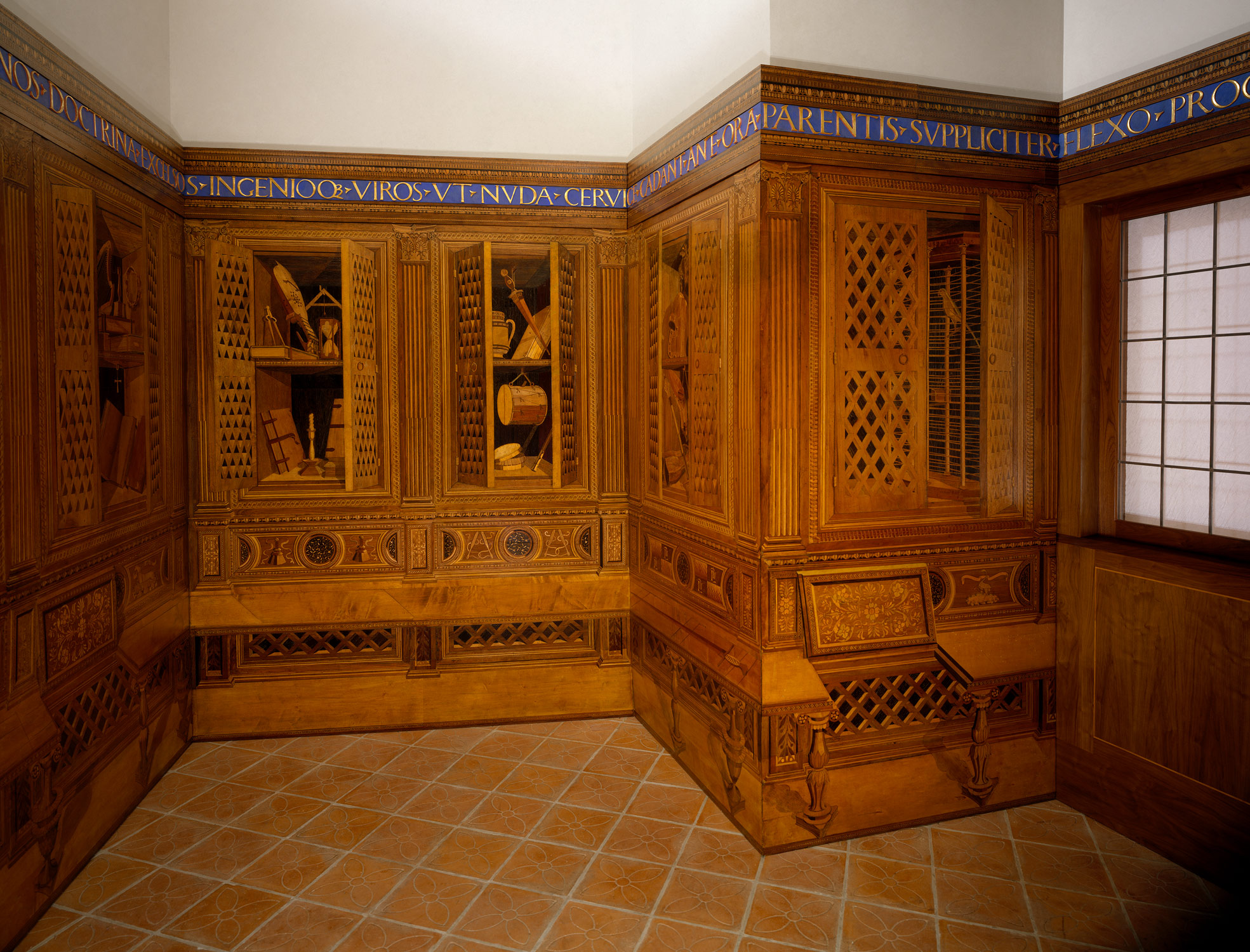
Studiolo from the Ducal Palace in Gubbio Francesco di Martini
The Studiolo is a small painting-encrusted barrel-vaulted room in the Palazzo Vecchio, Florence, Italy. It was commissioned by Francesco I de' Medici, Grand Duke of Tuscany. It was completed for the duke from 1570 to 1572, by teams of artists under the supervision of Giorgio Vasari and the scholars Giovanni Batista Adriani and Vincenzo Borghini .

Palazzo Vecchio Wikipédia, a enciclopédia livre Urbanismo, Arquitetura
Francesco I de' Medici (r. 1564-87), the second Grand Duke of Tuscany, commissioned a private studiolo in the Palazzo Vecchio that united his personal passion for collecting objects of natural wonder with the Medici tradition of utilizing art to proclaim authority.
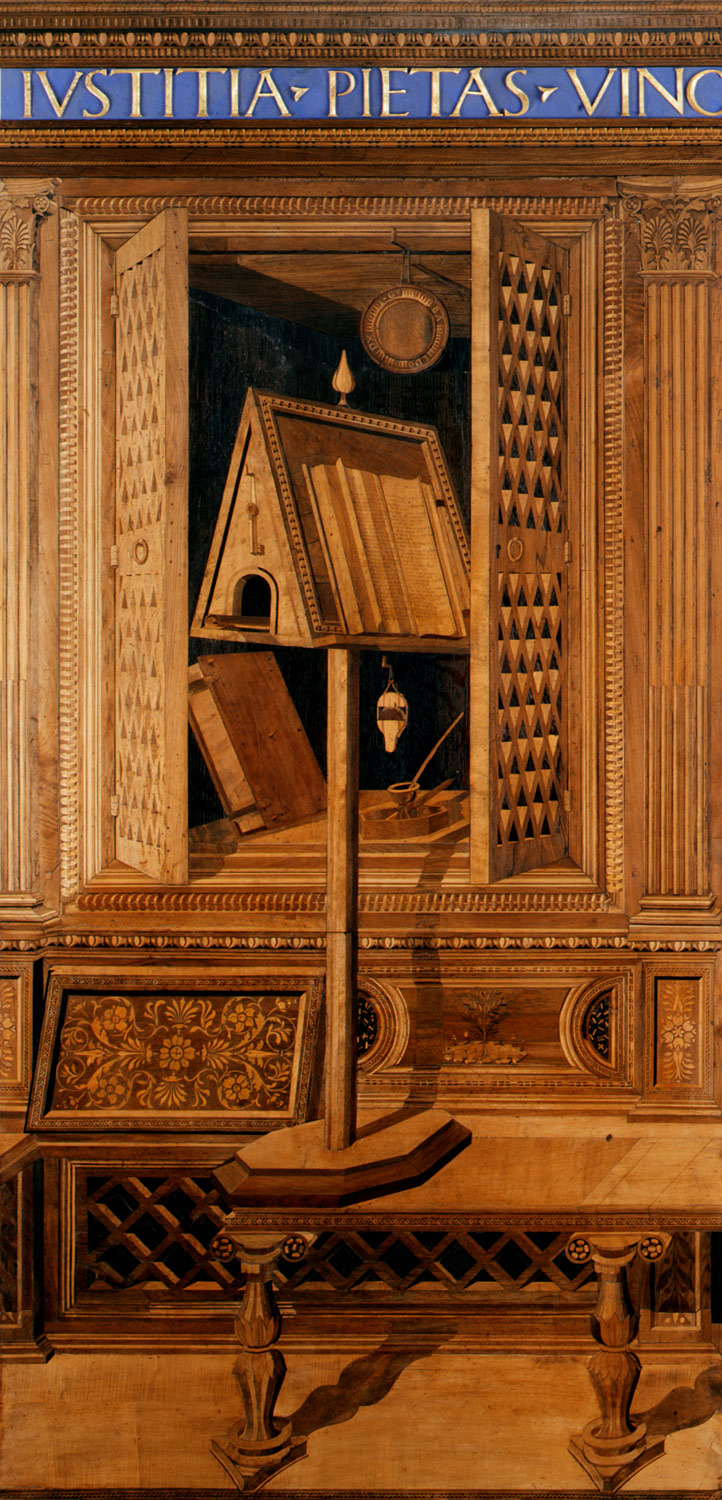
Studiolo from the Ducal Palace in Gubbio Francesco di Martini
Il testo qui di seguito include anche parti non lette che sono date ugualmente come pronunciate. Catechesi. I vizi e le virtù. 3. La gola. Cari fratelli e sorelle, buongiorno! In questo nostro cammino di catechesi che stiamo facendo sui vizi e le virtù, oggi ci soffermiamo sul vizio della gola. Cosa ci dice il Vangelo a questo riguardo.

Conciatore Francesco's Studiolo
The Studiolo was part of the private apartment of Francesco I and accessible only from the bedroom, which was located on the opposite side with respect to the current door overlooking the Salone dei Cinquecento, which opened in the nineteenth century.
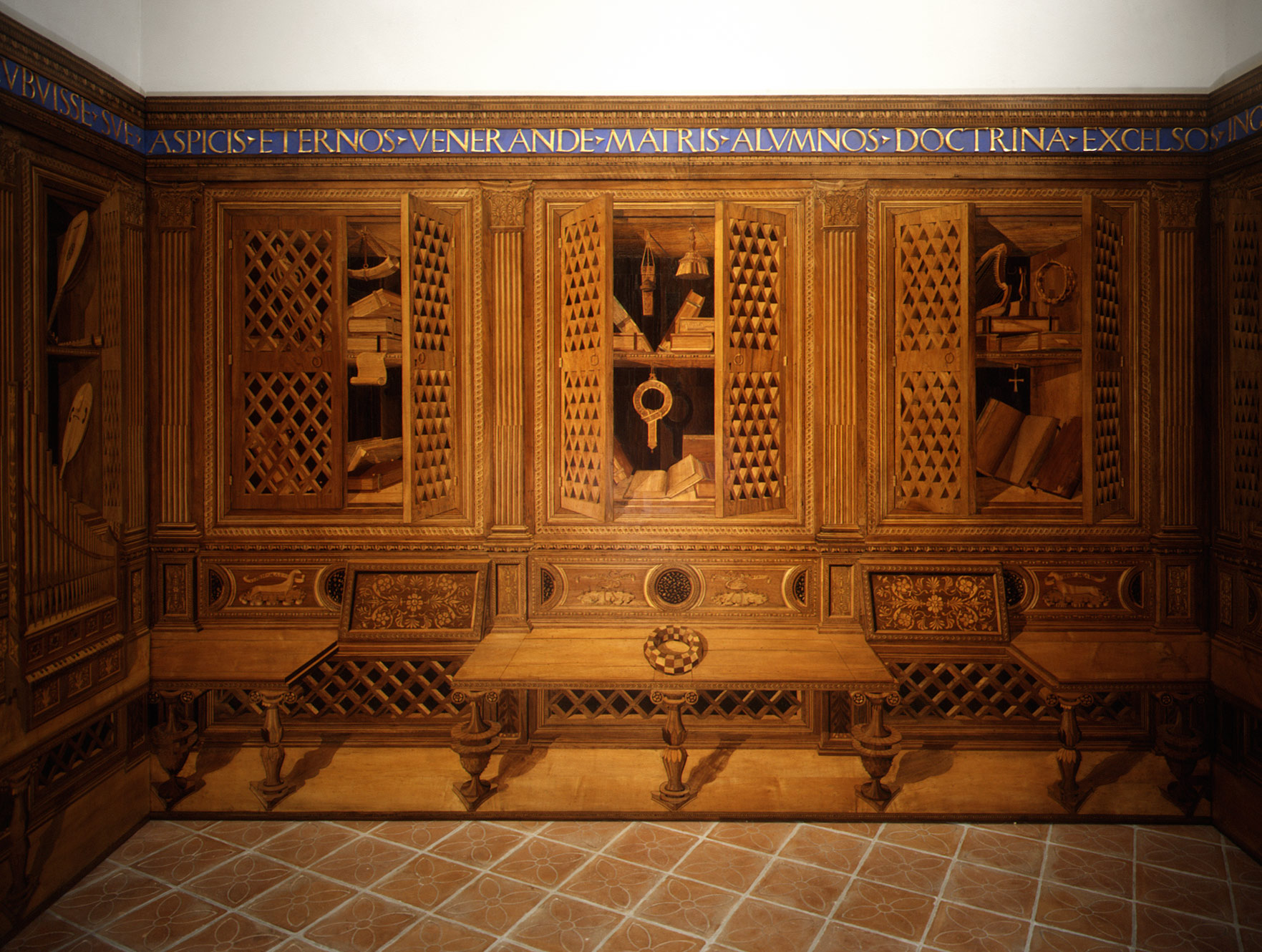
Studiolo from the Ducal Palace in Gubbio Francesco di Martini
13 Febbraio 2021 di Dario Nel corso del Rinascimento, in Italia, si afferma una nuova tipologia architettonica chiamata studiolo. Si tratta di un ambiente riservato al lavoro intellettuale e alla contemplazione delle opere d'arte. Lo studiolo di Francesco Petrarca